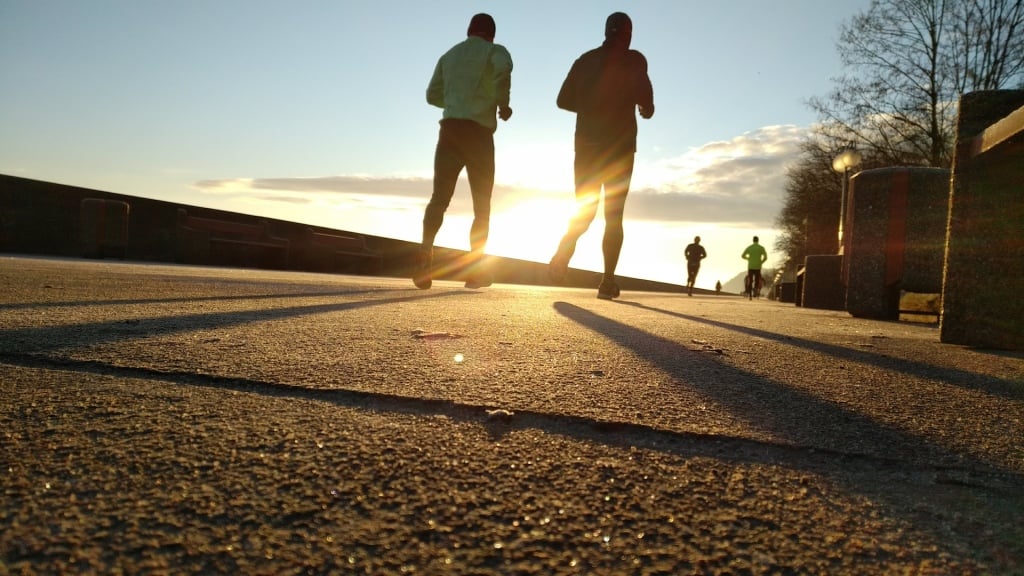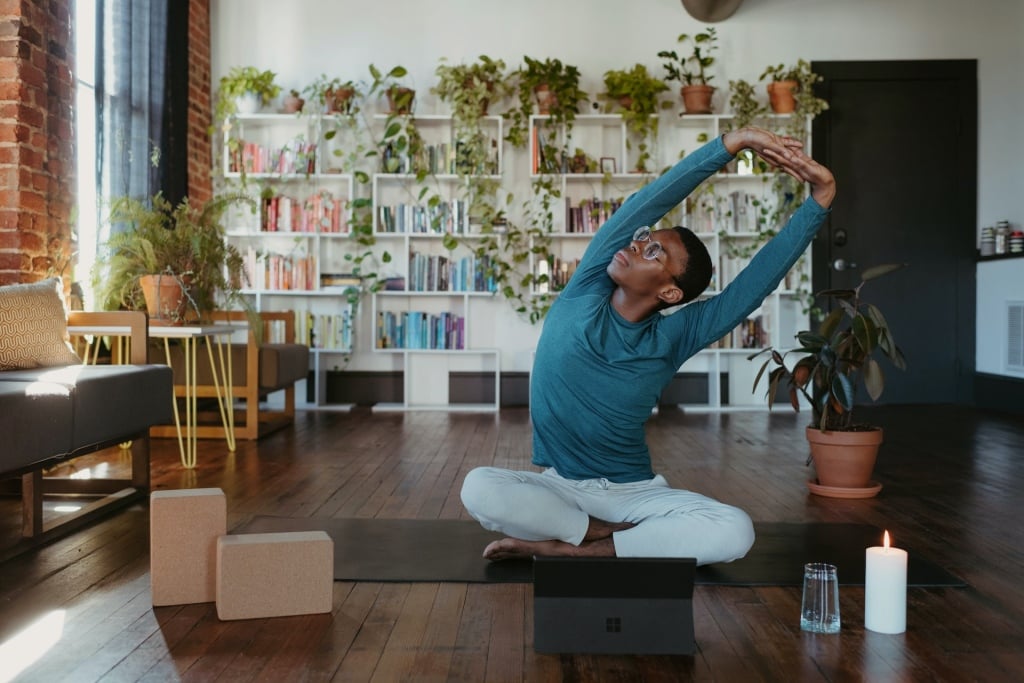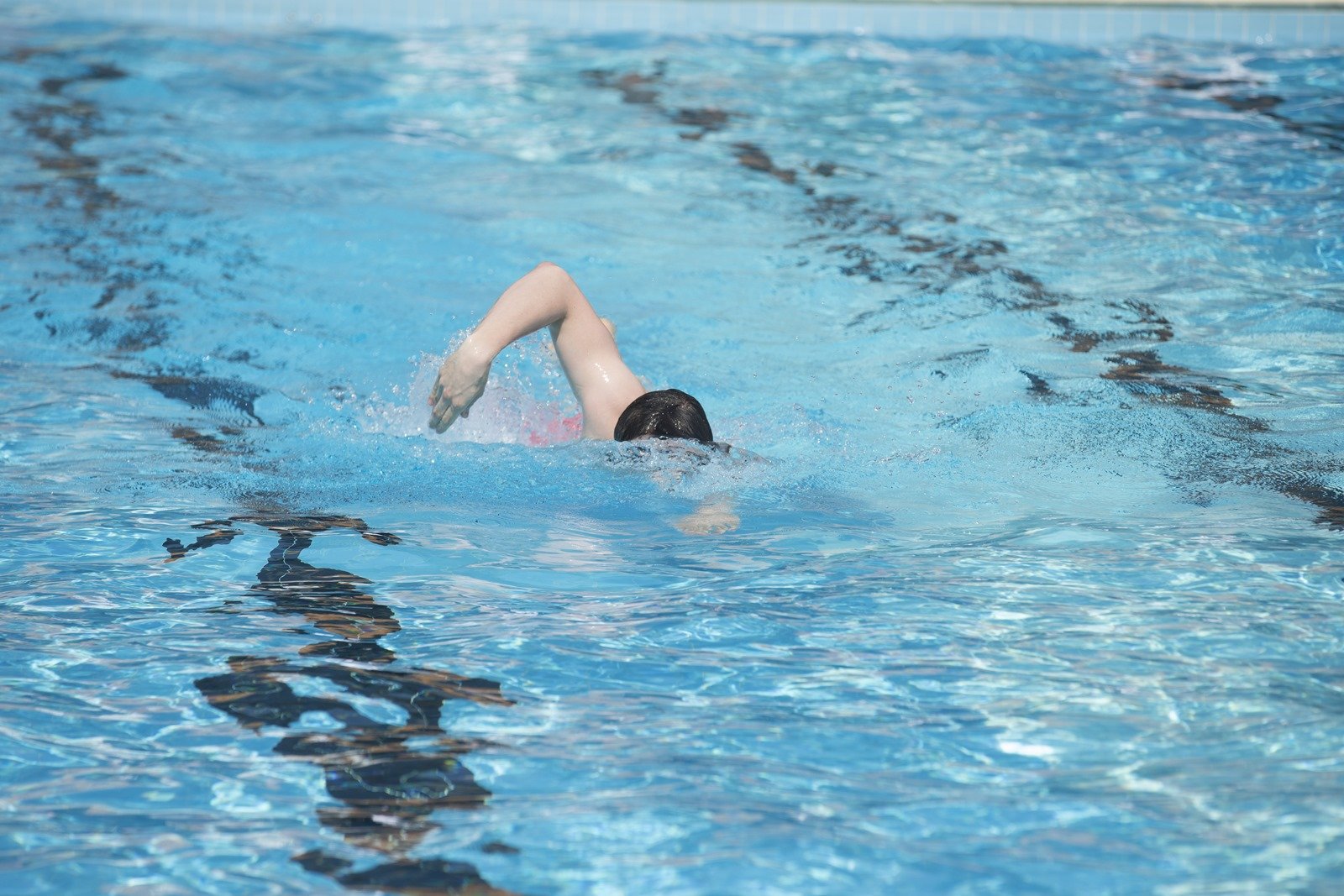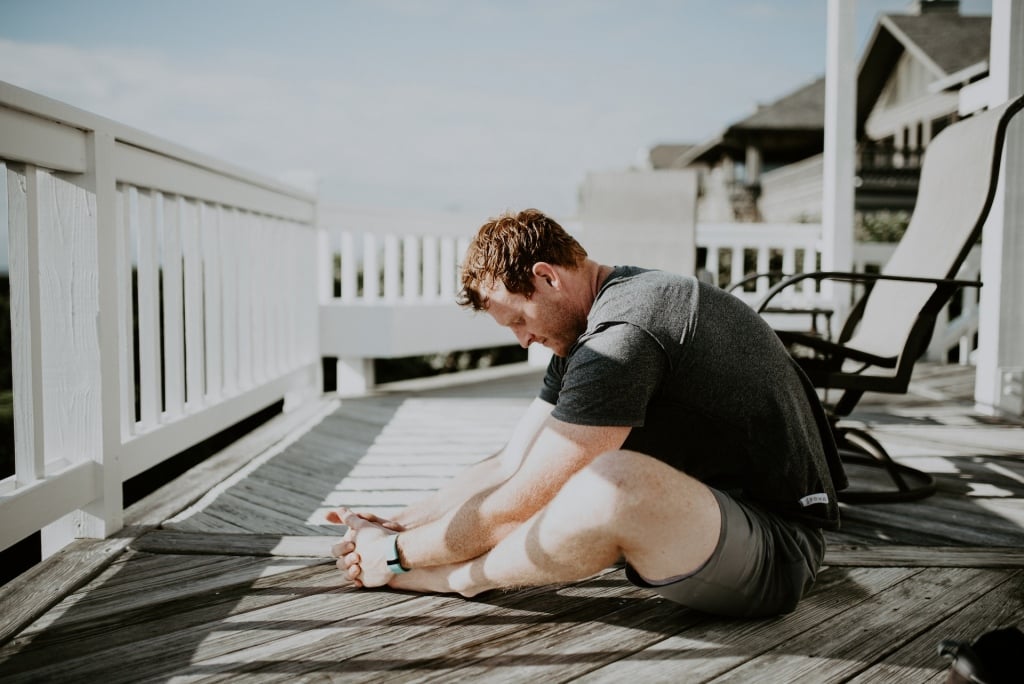When it comes to setting goals, the most important thing is to make them attainable – for you. Of course, it’s good to be ambitious and have something to work towards. But if you set your sights too high, it’s all too easy to get discouraged, and ultimately give up.
That’s particularly true for fitness and health goals. The point of these is to make your life better – not make you feel like you’re struggling to meet a too-high standard.
One of the best ways to set any type of goal is to think SMART – that is:
S: Specific
M: Measurable
A: Attainable
R: Relevant
T: Time-bound
With that in mind, here are some fitness goals that follow the SMART system. They’re easy to fit into your existing routine, and are suitable for different fitness levels, including absolute beginners.
Start by choosing one goal and see how you get along with that for a month. If it’s going well, you can always add more goals.
1. Hold a high plank for 60 seconds

It’s well known that planks are great for building core strength and stability. Recent research has also revealed that isometric exercises such as planks are particularly effective for lowering blood pressure. So that’s all the more reason to make a 60-second plank your fitness goal.
If you’ve never held a plank position before, start on your knees and work up to lifting them. Practise every day, increasing the amount of time you hold the position by a few seconds.
Once you can stay in plank for 60 seconds with relative ease, you can always update your goal – side plank, for example, or 60 seconds of mountain climbers.
2. Try a new class/exercise once a week

It’s normal to stick to the classes and exercises you already know. But switching things up can avoid a fitness plateau, as well as helping prevent muscle overuse injuries. So make a pledge to yourself to try something completely different once a week. If you normally head straight to the gym, book into a dance class. Usually opt for yoga? Give HIIT a go. You never know, you just might find your new favourite workout – and if you don’t enjoy it, you don’t have to do it again!
3. Do strength training three times per week

We start to lose bone density from the age of 35. Strength training is an excellent way to build stronger bones, so if you want to future-proof your body, it’s worth checking out the weights section of the gym.
Of course, you don’t have to start heavy and frequent. Aim for lighter weights once a week and build up to three sessions per week as you get stronger.
4. Run 5k without stopping

Interested in running but aren’t sure where to start? Our beginners’ training plan will get you to a 5k in 6 weeks. You’ll begin by alternating walking and running, until you can run a 5k with ease.
5. Learn to do a perfect push-up

If your focus is improving your upper body strength, what better way than mastering the push-up? Note that for this goal, we’re not aiming for a certain number of push-ups yet – we’re talking about perfecting the technique. That’s because it’s surprisingly easy to get push-ups wrong, which can lead to injury at worst, or fail to give you the full benefits at best.
Whether you’re using online tutorials or book a session with a personal trainer, make it your goal to learn the right push-up technique. This might mean starting with knee push-ups or just doing a few every day. If possible, do them in front of a mirror.
Once you’ve nailed the form, then you can think about setting goals for the number of push-ups you’ll do.
6. Stretch every day, even when you haven’t exercised

Stretching may seem like something to do pre- and post-workout. However, you can also feel the benefits of stretching on days when you’re not exercising.
Build in time each morning or evening to run through a quick stretching sequence, such as our yoga for flexibility sequence. It’ll take less than 10 minutes of your day, and can help protect your joints from injury and improve balance.
7. Increase your step count

There’s been some debate about the number of steps we need to take every day for our health – it seems the 10,000 steps recommendation may be a health myth.
But if you find that your everyday doesn’t involve much walking, you’ll be doing your body a favour if you look to increase your steps. Work out how many steps you take each day using your phone or a fitness tracker. If your daily count is under 3,000, make it your goal to increase it.
This could involve anything from regular family walks to going to the shops on foot instead of taking the car. If you’re a gym member, remember that the treadmill isn’t just for running – hop on to take an indoor walk, particularly when the weather isn’t great.
8. Swim three times per week

Looking for a low-impact cardio workout that’ll also tone your muscles? Swimming is an excellent option, and it can improve both your physical and mental health.
Start with a swim a week, and aim to build up the number of sessions until you’ve reached your goal of three swims per week. If you haven’t been swimming for a while, don’t go all-in at the beginning – try for 10 minutes and gradually increase your time in the pool. Once you’re in a routine, check out our 30-minute swimming workouts for beginners to build your fitness even further.
9. Meditate once a day

Looking to bring more calm to your life? Meditation might be the answer. Studies suggest regular practice can reduce anxiety, stress and depression. But even if none of those apply to you, taking the time for daily meditation can help build discipline and ground you in the moment.
It doesn’t have to take long – just ten to fifteen minutes a day. Try our seven days of meditation to get started. You can do a meditation once a week if that seems more manageable, slowly increasing the frequency until you meet your daily target.
Some people find spoken meditation distracting. If that’s you, try sound meditation to keep you in the present.
10. Hit the right balance target for your age group

Balance is increasingly seen as an indicator of health in later life. And it’s never too early to start working on your balance.
These are the lengths of time you should be able to stand on one leg at different ages.
Not hitting those times? Not a problem – make it your goal to stand on one leg for the correct amount of time for your age group with regular workouts such as yoga and Pilates, as well as general core strengthening. And, of course, simply practising standing on one (bent) leg.
If you don’t find it easy to make time to exercise, explore our guide to building the perfect morning routine to set you up for the day.
Find a club



